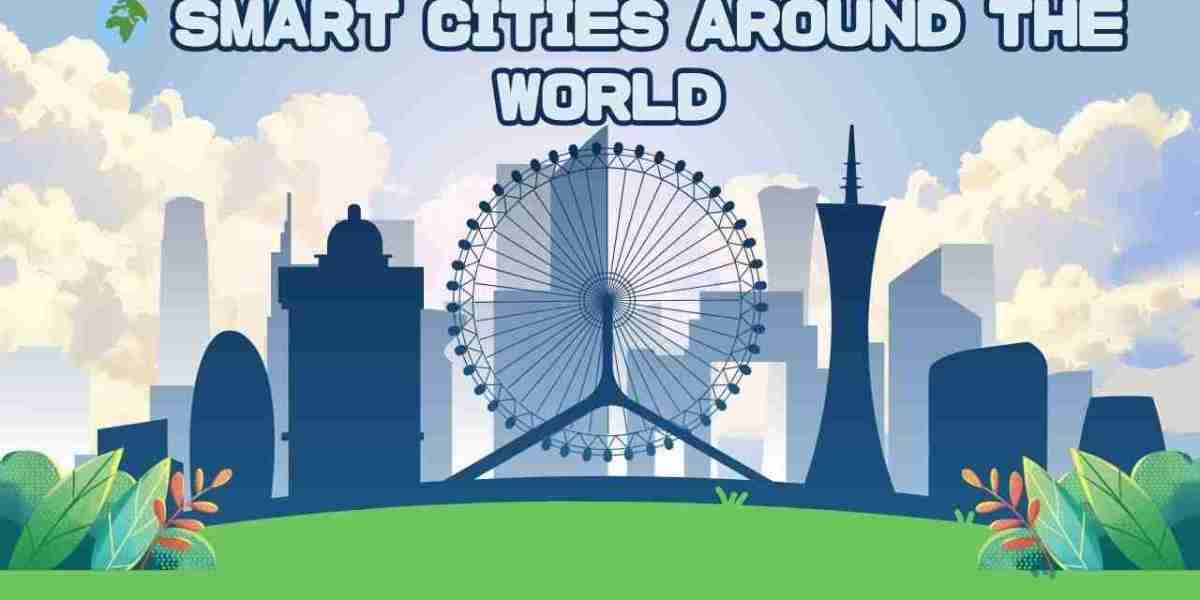? What Defines a Smart City Globally?
A smart city is not just about tech—it’s about intelligently applying IT infrastructure, real-time data, and digital services to tackle urban challenges. At its core, it’s a city that learns, adapts, and responds to its citizens' needs using technology.
These cities:
Use IoT sensors to manage traffic and pollution
Operate AI-driven energy grids
Offer e-governance for transparency
Enhance public safety with smart surveillance
Empower residents with mobile apps and online services
? Key Technologies Behind Global Smart Cities
Across continents, cities rely on several foundational IT innovations:
IoT (Internet of Things): From Amsterdam’s smart traffic lights to Singapore’s waste bins, sensors make cities intelligent.
Cloud Computing: Enables scalable digital services and seamless coordination between urban departments.
Big Data Analytics: Used in New York for crime pattern prediction and in Helsinki to improve bus schedules.
GIS (Geographic Information Systems): Supports real-time mapping of infrastructure in Nairobi and Paris.
AI & Machine Learning: Predicts water demand in Tel Aviv and assists autonomous transport in Tokyo.
5G Connectivity: Powers ultra-fast communication in Seoul and Toronto, enhancing real-time responsiveness.
? Spotlight: Smart Cities Across the Globe
Let’s explore how diverse nations integrate IT into city planning:
? Singapore
Singapore tops smart city rankings with its Smart Nation initiative. IT underpins everything—from facial recognition for secure access to AI-enabled elderly care.
? Barcelona, Spain
Barcelona reimagined its urban design with smart intersections, public Wi-Fi, and intelligent lighting powered by sensors.
? Dubai, UAE
From blockchain-powered governance to smart police patrols, Dubai uses cutting-edge IT to redefine futuristic living.
? Toronto, Canada
Toronto's Quayside project, backed by smart infrastructure, focused on data-driven sustainability and AI-enabled urban mobility.
? Nairobi, Kenya
In East Africa, Nairobi is rising with tech incubators, mobile payments, and GIS-based planning to improve slum rehabilitation.
? Stockholm, Sweden
One of Europe’s greenest smart cities, Stockholm uses digital twin simulations to optimize energy and transport systems.
? Shanghai, China
A sprawling network of sensors and predictive software powers traffic control, pollution management, and smart housing projects.
? Citizen Engagement: The Heart of Smart Cities
Technology without people is just circuitry. The most successful smart cities promote community participation, thanks to IT tools like:
Online portals for service delivery
Social media integration for communication
Crowdsourced data platforms
Citizen dashboards to track progress
These digital bridges strengthen trust and responsiveness between governments and residents.
⚠️ Challenges in Global Adoption
Even with rapid tech advancements, hurdles remain:
? Infrastructure Gaps: Many cities—especially in developing regions—face outdated systems.
? Data Privacy Concerns: Surveillance technologies raise ethical questions around personal data.
? Digital Literacy Divide: Citizens need digital education to fully engage with smart services.
? Policy and Governance Lags: Bureaucratic processes often slow innovation.
Navigating these challenges requires thoughtful regulation, inclusive policies, and collaborative innovation.
? Smart Cities and Sustainability
Climate change is no longer a distant threat. Many smart cities now use IT not just for convenience, but for environmental resilience:
Smart meters reduce energy waste.
Sensor-based irrigation conserves water.
Green buildings with integrated IT manage emissions.
Public transport apps encourage eco-friendly commuting.
Copenhagen, Curitiba, and Melbourne lead this movement with carbon-neutral goals backed by tech.
?️ What's Next for Global Smart Cities?
The next wave of transformation is already forming:
AI-Powered Urban Planning: From skyscraper









